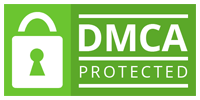Partner-Assisted Flexibility and Strength Exercises
emphasizes static stretching to improve your flexibility.
But if you have access to a partner or a trainer to assist you there is
a more effective way to stretch. It’s called PNF stretching (short for
proprioceptive neuromuscular facilitation) and it allows you to
stretch farther than you would normally be able to on your own,
which increases your range of motion. While this technique
increases the potential benefits of stretching it also increases the
risk of injury; therefore you should take a cautious approach and
work slowly using this method. The PNF method can be effective
regardless of your fitness level but it is best added as part of the
poststretch routine. Substitute PNF stretches for some of the
exercises you chose in chapter 2.
Strength training with a partner also has added benefits. A trainer or
a training partner helps keep you motivated and gives you the
opportunity to focus on improving your exercise technique and the
pace of the workout. If you are helping someone else train, be
aware of their individual strengths and weaknesses. It’s important to
position yourself properly during each exercise so that you’re able
to assist your partner if needed.
When stretching with a partner, make sure to communicate. The
person stretching should always signal when he or she feels a good
stretch. Stretch to the point of gain, not to the point of pain.
Encourage relaxation and proper breathing technique.
You will find partner-assisted flexibility exercises on pages 126149,
and partner-assisted strength exercises.
Sit on a bench or in a chair, with your arms at your sides. Flexing or contracting the abdominal muscles to support the back, be sure to sit upright.
TRAINER Stand behind your client. Gently apply pressure from the top of the head to accelerate the stretch. The opposite hand should be on the shoulder to prevent the client from lifting. Repeat to the opposite side. Ensure that your client is relaxed and breathing properly.
Sit on a bench or in a chair, your arms at your sides. Flexing or contracting the abdominal muscles to support the back, be sure to sit upright. Extend one arm over your head, the palm facing forward. Bend the extended arm and slowly drop down the palm.
TRAINER Stand beside your client. Apply downward pressure to the wrist while pressing against the upper arm to accelerate the stretch. Repeat to the opposite side. Ensure that your client is relaxed and breathing properly Stand with your feet shoulder-width apart and your arms by your sides. Extend one arm, the palm facing forward, above your head.
TRAINER Stand behind your client. Apply downward pressure to the wrist while pressing against the upper arm to accelerate the stretch. Repeat for the opposite side. Ensure that your client is relaxed and breathing properly. TIP If you are stretching your client on the course, use a club for assistance. Gently pull the club downward to accelerate the stretch. Keep the club close to the body to ensure there is no arching of the back.
Sit on a bench or in a chair. Flexing or contracting the abdominal muscles to support the back, be sure to sit upright. Extend the arms upward and press the palms together as shown. Stretch the arms up and slightly backward.
TRAINER Stand behind your client. Accelerate the stretch by gently pulling upward from just above the elbow. Ensure that your client is relaxed, breathing properly, and not arching the bac
Sit on a bench or in a chair, with your arms at your sides. Flexing or contracting the abdominal muscles to support the back, be sure to sit upright.
TRAINER Stand behind your client. Gently apply pressure from the top of the head to accelerate the stretch. The opposite hand should be on the shoulder to prevent the client from lifting. Repeat to the opposite side. Ensure that your client is relaxed and breathing properly.
Sit on a bench or in a chair, your arms at your sides. Flexing or contracting the abdominal muscles to support the back, be sure to sit upright. Extend one arm over your head, the palm facing forward. Bend the extended arm and slowly drop down the palm.
TRAINER Stand beside your client. Apply downward pressure to the wrist while pressing against the upper arm to accelerate the stretch. Repeat to the opposite side. Ensure that your client is relaxed and breathing properly Stand with your feet shoulder-width apart and your arms by your sides. Extend one arm, the palm facing forward, above your head.
TRAINER Stand behind your client. Apply downward pressure to the wrist while pressing against the upper arm to accelerate the stretch. Repeat for the opposite side. Ensure that your client is relaxed and breathing properly. TIP If you are stretching your client on the course, use a club for assistance. Gently pull the club downward to accelerate the stretch. Keep the club close to the body to ensure there is no arching of the back.
Sit on a bench or in a chair. Flexing or contracting the abdominal muscles to support the back, be sure to sit upright. Extend the arms upward and press the palms together as shown. Stretch the arms up and slightly backward.
TRAINER Stand behind your client. Accelerate the stretch by gently pulling upward from just above the elbow. Ensure that your client is relaxed, breathing properly, and not arching the bac




Aucun commentaire